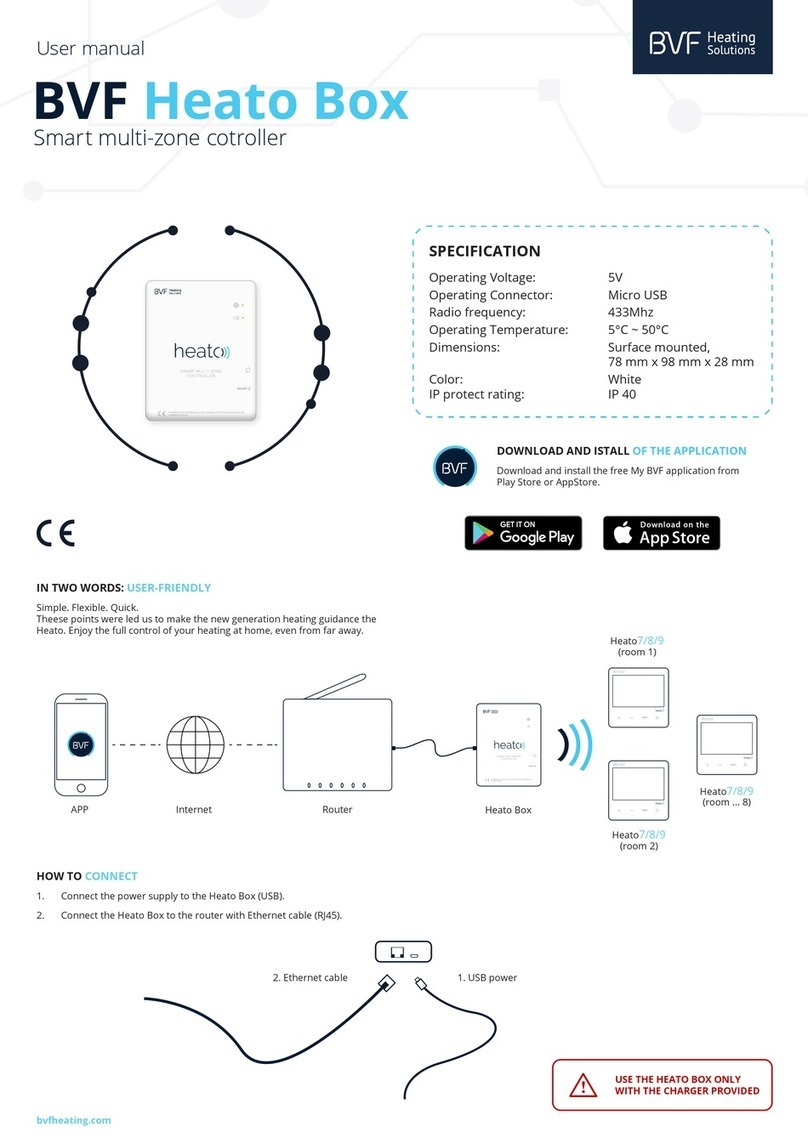
BVF SRHC 18-36 installation manual
Loop the heating cable on the overhang area of the roof. This is the part
that extends past the building wall. Extend the bottom of each heating
cable loop over the roof edge and, using a UV-resistant cable tie, connect
the bottom of each loop to the cable running in the gutter to ensure a
drainage channel off the roof and into the gutter and downspout. The
cable running in the gutter should remain against the bottom of the gutter.
Extend the top of each heating cable loop beyond where the wall joins the
roof.
Use roof clips to attach heating cable to the roof surface.
For flat roofs, the heating cable can be spaced as needed to create runoff
paths for melting ice and snow. Use single ended clips located at 1 meter
intervals to secure the cable to the roof. Roof clips may be attached to a
shake or shingle roof with nails or screws. Reseal the nail or screw holes
if necessary before installing heating cable in the clips. Roof clips may be
attached to a metal roof using screw, nail or adhesive.
A barrier (snow fence) can be placed on the roof above the heating cable.
This prevents damage to the cable and keeps the installation from coming
loose due to ice slides. If desired, the heating cable can be attached to the
barrier with UV-resistant cable ties, instead of using roof clips. Do not use
wire or other materials because they may damage the heating cable.
All penetrations made on the surface of any style of roof should be
moisture proofed by using sealing type fasteners. The installation of any
heating system should not affect the overall integrity of the roof or gutter.
The mounting hardware should be made of corrosion resistant material
and should not have sharp edges or burrs
In gutters and downspouts
Run heating cable along gutters and into downspouts, ending below the
freezing level. Permanent attachment of the cable to the gutter bottom is
not necessary. Loop the heating cable in downspouts if convenient, such
as when the downspout is not at the end of the run.
Use downspout hangers to protect the heating cable from fraying and
from damage from sharp edges and to provide strain relief. Use roof clips
to route heating cable into and out of the gutter in such a way as to
prevent abrasion to the cable. Protect all cable that protrudes past the
lower opening of the downspout.
4.4 Install heating cable end seals, splices, tees and cold lead connection




























